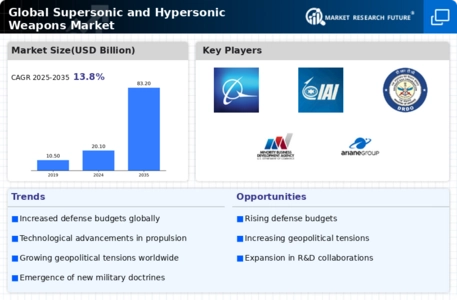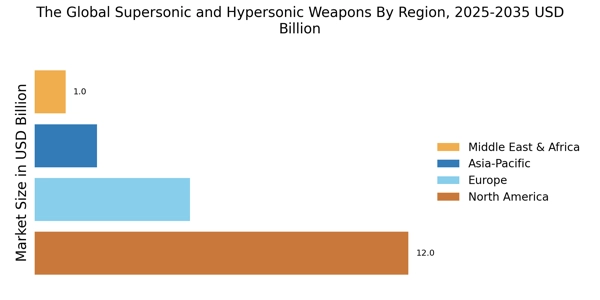Supersonic and Hypersonic Weapons Market Summary
As per MRFR analysis, The Global Supersonic and Hypersonic Weapons Market was estimated at 20.06 USD Billion in 2024. The market is projected to grow from 22.83 USD Billion in 2025 to 83.19 USD Billion by 2035, exhibiting a compound annual growth rate (CAGR) of 13.8 during the forecast period 2025 - 2035.
Key Market Trends & Highlights
The Global Supersonic and Hypersonic Weapons Market is poised for substantial growth driven by technological advancements and geopolitical dynamics.
- North America remains the largest market for supersonic weapons, reflecting its robust defense infrastructure and investment.
- The Asia-Pacific region is emerging as the fastest-growing market, fueled by increasing defense budgets and regional tensions.
- Supersonic missiles dominate the market, while hypersonic glide vehicles are rapidly gaining traction due to their advanced capabilities.
- Technological advancements and defense modernization programs are key drivers propelling market expansion in both segments.
Market Size & Forecast
| 2024 Market Size | 20.06 (USD Billion) |
| 2035 Market Size | 83.19 (USD Billion) |
| CAGR (2025 - 2035) | 13.8% |
Major Players
Lockheed Martin (US), Northrop Grumman (US), Raytheon Technologies (US), Boeing (US), General Dynamics (US), BAE Systems (GB), Thales Group (FR), Airbus (DE), Kongsberg Gruppen (NO)


















Leave a Comment